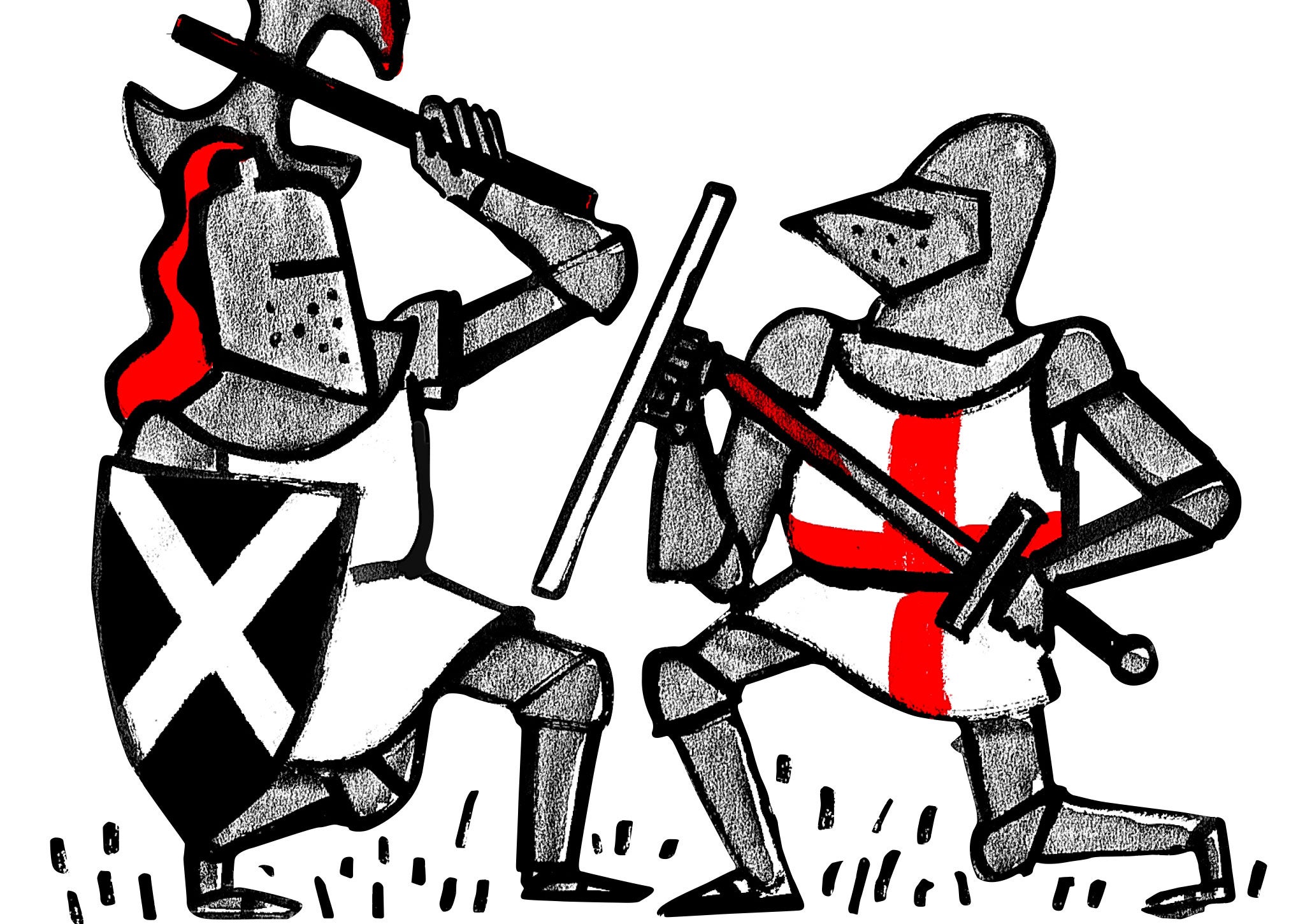Scottish referendum: The Yes vote was the love that dared speak its name, but it was not to be
On the streets of Stirling, it was as if independence had already been won


Your support helps us to tell the story
From reproductive rights to climate change to Big Tech, The Independent is on the ground when the story is developing. Whether it's investigating the financials of Elon Musk's pro-Trump PAC or producing our latest documentary, 'The A Word', which shines a light on the American women fighting for reproductive rights, we know how important it is to parse out the facts from the messaging.
At such a critical moment in US history, we need reporters on the ground. Your donation allows us to keep sending journalists to speak to both sides of the story.
The Independent is trusted by Americans across the entire political spectrum. And unlike many other quality news outlets, we choose not to lock Americans out of our reporting and analysis with paywalls. We believe quality journalism should be available to everyone, paid for by those who can afford it.
Your support makes all the difference.Step off the train at Stirling, as I did on Wednesday, and you could be forgiven for thinking that the local authorities had mandated a vote for independence. The Scottish Connections tartan-tourist shop greeted travellers, festooned with blue Yes balloons.
In reality, a Better Together coalition of Labour and Tories – tactically allied to keep the SNP out of office – controls the council of this city that has so often served as a hinge of Scottish history. On the streets, however, almost all of the visible – and audible – passion came from Yes. Save for council-approved bunting, with alternate lines of Union flags and saltires hedging their bets, I saw not a single private poster for No.
“The swiftness with which the Yes campaign has normalised, even sanitised the notion of independence has been astonishing,” Scott Hames said. “It’s a miracle that we’re here.” Hames, a Canadian incomer and self-described “fellow traveller” of the Yes movement, teaches literature at Stirling University.
In 2012, he edited a prescient collection of essays about independence by Scottish authors and thinkers, entitled Unstated. Maybe that foresight still holds. Before Alex Salmond quit as First Minister, Hames explained that the younger Yes camp had carved out a culture of its own. “It’s like a scene – it’s hipsterville. It’s the cool thing for people in their twenties. The first thing to say on this scene is that you’re not a nationalist, and the second thing is that you don’t have much time for the SNP.”
Yet, for all that free-spirited fervour, on Thursday Stirling voted solidly against independence: 59.77 to 40.23 per cent. Better Together was not quite the love, or fear, that dared not speak its name. I did find its activists on Stirling streets, though far less vocal than the merry, musical band of Yes partisans.
One, a Lib Dem sympathiser, set out his hopes not for mere continuity but for radical, UK-wide decentralisation. “Within a decade, we can have a fully federalised UK,” he enthused. “Home rule for everyone – but within a ‘nation of nations’.” Nobody, whether No or Yes, wanted to vote for business as usual. The No stalwart also suggested: “Yes has mounted an absolutely brilliant Twitter and Facebook campaign, but on the ground, not so much changed.” On the day, so it proved.
Thanks in part to Gordon Brown, whom back in June I saw deliver a barnstorming speech in favour of the “social Union” at Melrose in the Borders, the Nos had belatedly begun to feel some passion of their own. At last, the cynical doomsters of Better Together had twigged that only such emotion might save their skin. Yes had played not just the best but, for many listeners, the only tune more melodious than a banshee wail of banker-generated fright. Then Brown intervened.
“When the No campaign talk about the Union,” Scott Hames told me, “they’re talking overwhelmingly about a 20th-century welfarist project.” We were sitting at a café in the new Forthside complex, flanked by a cinema multiplex, an American-style diner, a chain hotel. You can treat Stirling as a crossroads and crucible of rival Scottish stories, from the crag-hugging castle where both Mary, Queen of Scots and James VI/I grew up to the battlefield of Bannockburn, two miles south. But the castle also headquartered the Argyll and Sutherland Highlanders, whose famous “Thin Red Line” traced a long journey from clan militia to imperial vanguard. If Robert the Bruce stands proud on the castle esplanade, then so – in another statue – do the Highlanders who fought in the Boer War.
Behind us, the broad river curled up towards Stirling Bridge, where in 1297 William Wallace lured the smug English into a trap and cut them to pieces. Further off, the National Wallace Monument poked up through its girdle of forest: a proud phallic tower erected in 1869, when sentimental Willy-waving had taken the place of rational hope for self-determination. The castle gleamed atop its crag. Nearby, old railway buildings brooded, awaiting restoration. Feudal, monarchical, industrial, globalised – in Stirling, four separate epochs (at least) sit packed together as near neighbours. After the Union’s last-ditch survival on Thursday, the challenge of that legacy remains: in Stirling, in Scotland, and indeed across much of Old Europe.
Yet, beyond the 55-45 defeat of Yes, the weather has irrevocably changed. Crown unionism, if not social unionism, beat the retreat. For Hames, “The Nos conducted almost all of their heart-tugging emotional campaigning on the terrain of Scottishness… They have gone to extraordinary lengths to authenticate a Scottish belief in the Union.” On Wednesday, before his final speech, Brown was piped on stage – “unthinkable in the Labour tradition 20 years ago”.
He added: “You’re sick of hearing all this self-congratulatory talk about this wonderful orgasm of grassroots democracy. But it’s true – it really is! To see that brought to fever pitch, that does have a deep resonance.” At the Yes office on Baker Street, volunteer Lorna Smith – who over the past two years had helped to staff a weekend stall – reported: “In my lifetime, I have never experienced a level of engagement among people anything like this.” This festival of democracy was as solid, and may prove as robust, as the castle walls.
Hames, who worked on a youth theatre project with 16 and 17-year-olds, stressed: “The quality of their political acumen is staggering. You’re going to have very demanding set of voters who have been encouraged by the whole political class to think big and ask the hardest questions.” In Stirling, the turnout on Thursday topped 90 per cent. Even in mid-afternoon, the flow of voters through a polling place at the Albert Halls on Dumbarton Road never slackened.
Paul Cairney, professor of politics at Stirling University, has found the entire process “very cheering”. And, overwhelmingly, aggro-free. “Whenever I’ve been in the streets, it’s been a very nice atmosphere.” In Stirling, I witnessed no rage or rancour. Yes campaigner Alistair Warwick told me that, on polling day, he posted a Facebook message: “Whichever way you vote: be generous, be kind.” But has the national schism left wounds that will take time to heal? Paul Cairney felt sanguine. “It’s only a small proportion of the population that takes that view. The difference between further devolution and independence is not what it was. Now we’re on a spectrum.”
Yet Cameron’s “devolution revolution”, already trailed by Brown, has failed to convince many Yes activists. For Scott Hames, even if no one in Scotland yet grasps the constitutional outcome of No, “they do understand that the rules of the game were changed in the 90th minute. A lot of people will react very badly to that.” He argued: “Because of the whole complexion of the last fortnight of this campaign, many people will feel cheated… Some of those people really will be devastated, disillusioned, angered.”
Those 44.7 per cent of Yes voters – rising to a clear majority in Glasgow and Dundee – will not pipe down. Even with Devo More, “I can’t see [Westminster] delivering anything like what it will take to make this go away”. “The genie is out of the bottle,” said Alistair Warwick at the Yes office.
On referendum morning, I visited the battle site at Bannockburn. This June, to mark the 700th anniversary, the National Trust for Scotland opened a hi-tech, animatronic “battlefield experience” there. I preferred to roam the misty fields, linger under the giant saltire within its circular shrine and unsheathe my imagination. Some people had deliberately come today. “We’re on the cusp of history,” a Lycra-clad cyclist proclaimed. A guide told a gaggle of schoolchildren about the panic in Edward II’s camp that had allowed Robert the Bruce to seize the moment for the Scots. Two fat crows flapped above the site like revenants from some gory Border ballad. The castle glinted through a vista of trees. On this of all days, the past glowered over the present. But my cab driver, a veteran rocker sporting a silver ponytail, wanted to talk about his beloved AC/DC – an affiliation emblazoned over his denim jacket. As at every point where history turns, or twists, other passions persist. Not everybody lives inside the bubble of politics.
“‘Come all ye’, the country says/ You win me, who take me most to heart.” So ends the poem by Kathleen Jamie that, newly inscribed, runs around the stone rotunda at Bannockburn. The heart, not the blood, makes the nation. Among the lasting achievements of the Yes movement may be to liberate the idea of national self-determination from the toxic politics of ethnic identity. “Identity is taken as a given,” Scott Hames insisted to me. “It’s not the fuel in the tank. It’s more like the hood ornament on the front of the car.”
If the devolution drive next year spills over into England, then any new model of that country will also have to say “Come all ye”. It too needs a welcoming, inclusive heart. In any case, the constitutional status quo within the islands of Great Britain surely passed away peacefully on Thursday. As Lorna Smith told me amid the clutter of the Yes campaign, “Whatever happens, nothing will be the same again. I think the British state has been shaken to its core.”
Join our commenting forum
Join thought-provoking conversations, follow other Independent readers and see their replies
Comments